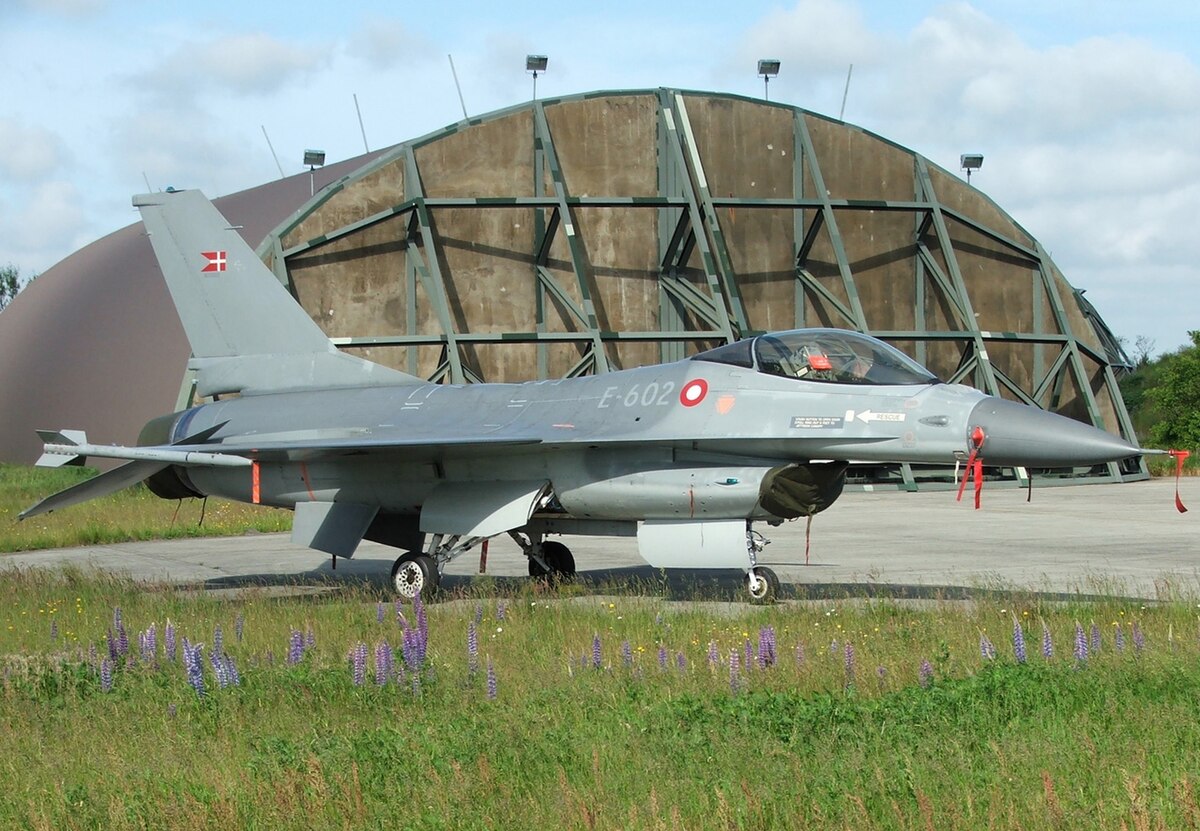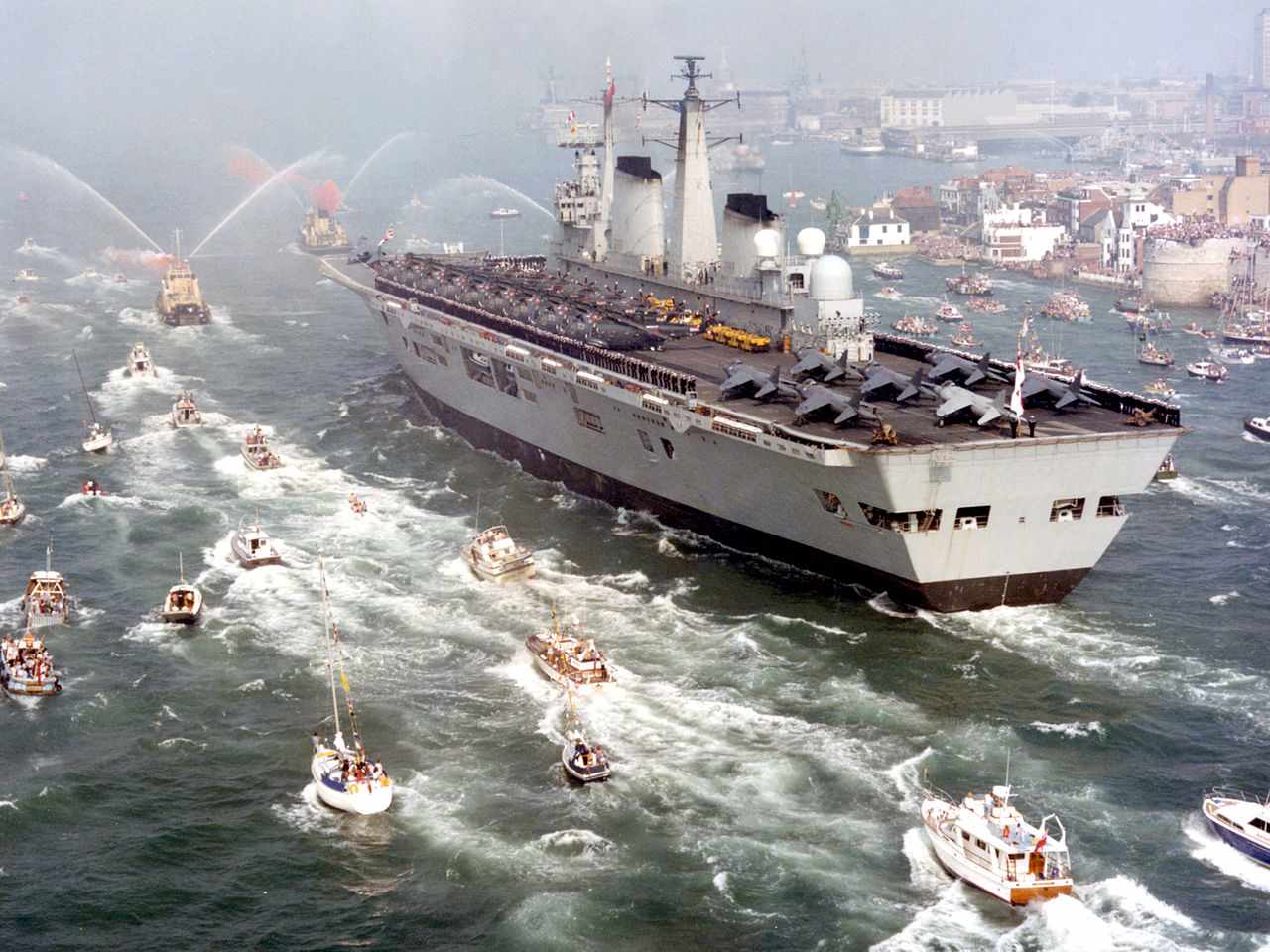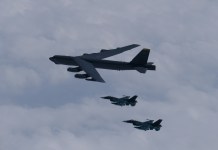Argentina’s recent acquisition of the combat-hardened F-16 Fighting Falcons from Denmark has put the security of the Falkland Islands under the scanner, more than 40 years after a war was fought between Argentina and the United Kingdom.
Concerned by Argentina’s purchase, Robert Buckland MP, the chair of the Northern Ireland Affairs Committee, questioned Britain’s Secretary of State for Defense over the UK’s present defense posture in the South Atlantic. Questions were specifically raised about the defense capability at the Falklands Island, UK Defense Journal reported.
Assuaging these concerns, the Minister of State at the Ministry of Defence and Minister for the Armed Forces, Leo Docherty, responded by stating that the defense readiness was continuously evaluated to address various changes and developments in the region.
He affirmed the UK’s commitment to ensure the security of the Falkland Islands. He said, “We keep our defense posture in the South Atlantic under regular review to take account of the full range of developments. I am satisfied that the current military presence in the South Atlantic is at the appropriate level to ensure the defense of the Islands.”
The Falkland Islands are presently home to a large British military presence, which includes RAF Mount Pleasant, serving as a critical airbridge connecting the islands to the United Kingdom. There are infantry companies, air defense batteries, Typhoon fighter jets, and usually a Royal Navy patrol vessel among the British forces stationed there.
The security of the island is in focus in light of Argentina bolstering its fighter fleet with combat-hardened US-origin jets. Earlier this month, Argentina formally signed to acquire 24 ex-Danish F-16A/B aircraft along with Sidewinder and AMRAAM missiles in what has been hailed as a “historic purchase.”
Argentine Minister of Defence, Luis Petri said, “Today we are completing the most important military aeronautical acquisition since 1983. These are 24 F-16 aircraft that have been modernized and equipped with the best technology, and today are at the level of the best aircraft that fly in the skies of the South American region and the world.”
“With these new aircraft, we are taking a momentous step in our defense policy, recovering the supersonic capacity of our aviation and achieving the definitive entry of our Air Force into the technological challenges of the 21st century,” Petri asserted.
The UK had imposed an export ban on Argentina to prevent the Argentine military from modernizing after the 1982 war. As part of this strategy, Britain restricted access to UK-made parts, preventing Buenos Aires from purchasing any fighter jets.
The ban was successful for the most part as Argentina had been unable to purchase aircraft, such as the South Korean FA-50 trainer/light fighter and the Swedish Saab Gripen, which had Martin Baker ejection seats, due to the British embargo.
Despite being a key ally of the UK, the US prioritized its security. Washington is believed to have been concerned about having JF-17s of Chinese origin stationed in its backyard, which Argentina was contemplating buying.
This led to intense lobbying for the F-16 fighters by the US. Strapped for cash and viable choices, the Argentine government had no other option but to acquire the Danish F-16s.
However, since Falkland Island remains a pressing issue between Buenos Aires and London, the concern expressed by British lawmakers about force modernization in Argentina appears to be valid.

Falkland Islands War
The Falkland Islands War lasted ten weeks in 1982. It was fought for two British dependent territories in the South Atlantic: the Falkland Islands and its dependent territories, South Georgia and the South Sandwich Islands.
Argentina invaded and conquered the Falkland Islands on April 2, 1982, and South Georgia was invaded the next day. In response, the UK sent a naval task force to confront the air force and navy of Argentina. This was followed by a large-scale amphibious invasion that eventually ended in a British victory.
The security situation in the Falklands once again attracted attention when the new Argentinian government first expressed its intention to acquire fighter jets, submarines, and warships. This raised concerns about the potential for Argentina to initiate a renewed invasion akin to the events of 1982, as per reports earlier this year.
The islands are officially classified as British Overseas Territory (BOT). Since their short-lived but violent confrontation over the islands in 1982, Britain and Argentina have persistently disagreed on the question of sovereignty of the Falkland Islands.
While a modernized Argentine military is still a cause of concern, British officials continue to ensure that they are fully prepared against all eventualities. In the aftermath of the war and British victory, the UK took steps to strengthen its defenses, thereby establishing a tri-service defense capability. At the heart of this capability is the RAF Mount Pleasant, an airbase built on East Falkland, south of Stanley, the capital.
Resources from the British Army and Royal Navy are also delegated to the region; troops are rotated in and out as needed. At any given moment, there are about 1,500 British military personnel stationed on the Falkland Islands.
The Royal Engineers and Royal Artillery (RA), the latter of which is responsible for the ground-based air defense (GBAD) system Sky Sabre, comprise the principal land components of the United Kingdom’s presence on the Falkland Islands. The Sky Sabre GBAD is equipped with Link 16, a tactical datalink that is compliant with NATO standards and enables communication between the system and RAF and Royal Navy assets.
With the deployment of the CAMM-Extended Range variant currently being developed, the system can provide medium-range missile and airplane interdiction up to 25 kilometers, with the potential to reach 45 kilometers.
Additional land assets consist of a rotating infantry company, usually comprising between 100 and 150 soldiers, along with additional elements such as communications, logistics, and signals.
The Royal Air Force (RAF) maintains the largest military presence on the Falkland Islands. Based at RAF Mount Pleasant, a lone squadron of four Tranche 1 Typhoon aircraft is entrusted with air combat patrol. The Tranche 1 fighters are the oldest versions of the Typhoon, and 30 remain in service with the RAF.
As per reports, an A400M Atlas cargo plane and a Voyager air-to-air refueling tanker are also permanently stationed on the Falklands to support the Typhoon jets. The British military has an early warning and airspace control network that is intended to keep an eye on the skies over the Falkland Islands. This will likely keep the Argentine F-16s at bay when they join service.

The Royal Navy keeps a standing patrol frigate in the South Atlantic, and an assigned Falkland Islands patrol vessel—in this case, the Batch 2 River-class offshore patrol vessel (OPV) HMS Forth — carries out daily maritime patrols of the island’s territorial waters and economic zone.
With a few 50 caliber machine guns and other small arms, the armament is limited and consists of a Bushmaster 30mm main cannon. Two sensors are a Kelvin Hughes navigation radar and a Terma Scanter 4100 2D radar.
Additionally, supported by a small permanent (full-time regular) cadre, the 40-strong Falkland Islands Defence Force (FIDF) is made up of local military reservists who live on the islands. The unit trains once a week, and its members can also participate in military training in the UK.
In March 2022, James Heappey, the minister of the armed forces, stated: “The Ministry of Defence undertakes regular assessments of possible threats to the Falkland Islands to ensure that an appropriate defensive capability is maintained…Our forces in the South Atlantic are at the appropriate level to ensure the defense of the Islands.”
- Contact the author at sakshi.tiwari9555(at)gmail.com
- Follow EurAsian Times on Google News




